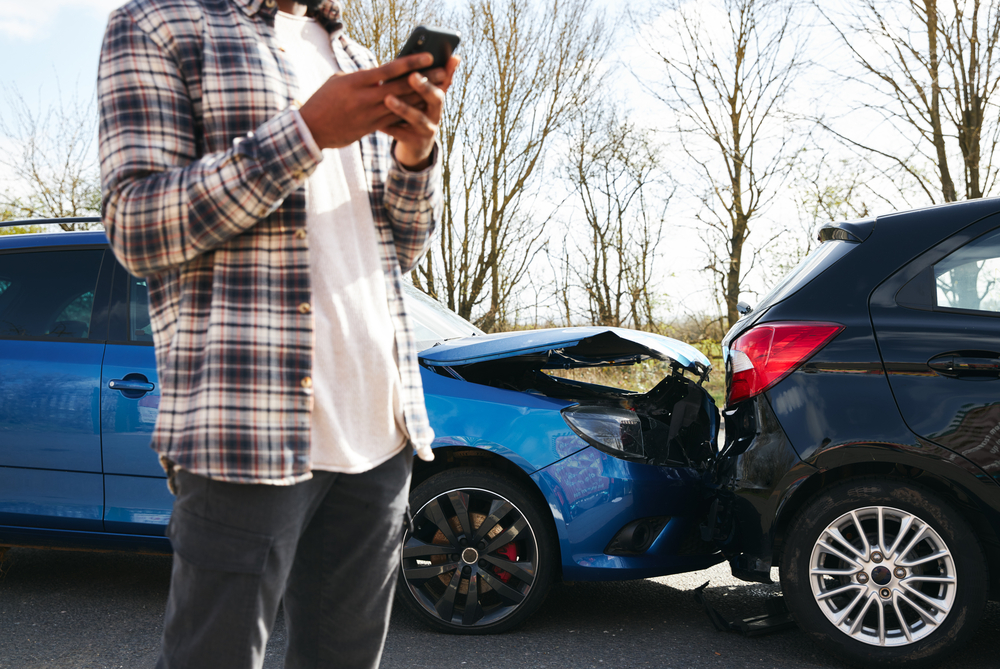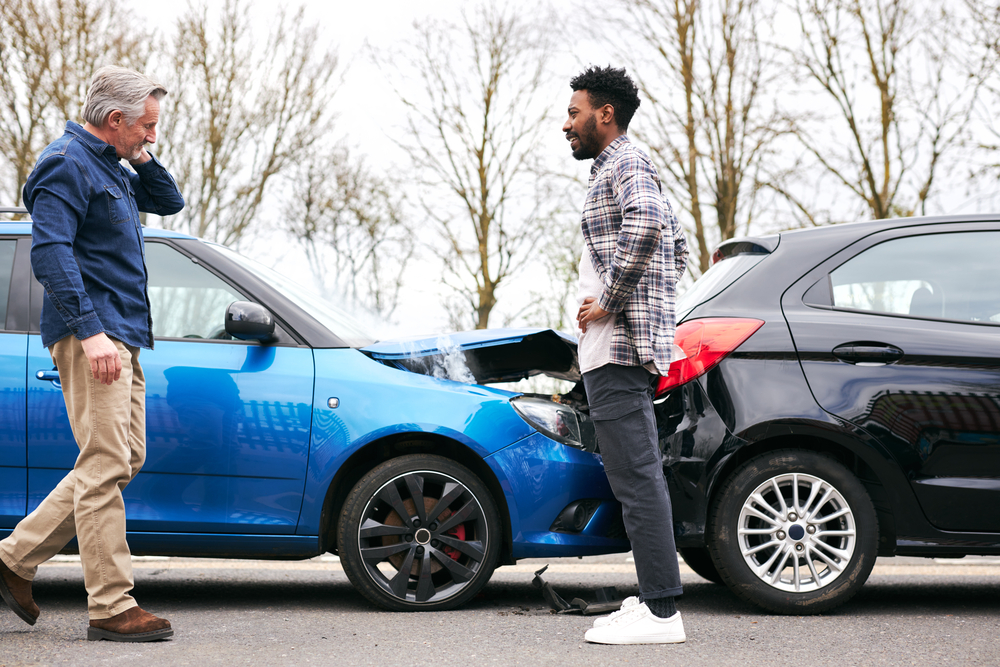Out of the 6 million car accidents that happen on U.S. roads every year, roughly 40% of them are rear-end collisions, according to the National Highway Traffic Safety Administration (NHTSA). In other words, getting rear-ended is highly common, and so you should learn how to handle the incident accordingly. Today, you are going to learn what to do if you are rear-ended, as well as some tips for choosing the collision repair center in NJ that will fix up your car.
What is a Rear-End Collision?
A rear-end collision is a type of car accident where one vehicle crashes into the back of another vehicle in front of it. These accidents are typically caused by a trailing driver’s failure to maintain a safe following distance or react in time to sudden changes in traffic conditions. Rear-end collisions can occur at various speeds, from slow-moving traffic to highway speeds, and can lead to a wide range of damages and injuries.
The physics behind rear-end collisions are relatively straightforward. When a car is moving, it possesses kinetic energy, which is the energy of motion. If the car in front suddenly stops or slows down, the trailing car must also reduce its speed to avoid a collision. If the trailing driver fails to apply the brakes in time, their car will continue moving forward, leading to a rear-end impact.
What Causes Most Rear-End Collisions?
Rear-end collisions are often the result of driver negligence or errors in judgment. Several factors contribute to the prevalence of these accidents, including:
- Distracted Driving: When drivers divert their attention from the road, whether by using a phone, adjusting the radio, or engaging in other activities, they are more likely to miss the vehicle in front slowing down or stopping.
- Following Too Closely: Tailgating, or driving too closely behind another vehicle, leaves little room for the trailing driver to react in time to sudden changes in traffic flow.
- Speeding: Exceeding the speed limit reduces the stopping distance, making it harder for drivers to react to traffic changes quickly.
- Adverse Weather Conditions: Rain, snow, ice, or fog can decrease traction and increase the stopping distance, making it more challenging for drivers to avoid rear-end collisions.
- Drowsy Driving: Fatigued drivers have slower reaction times and impaired judgment, making them prone to rear-ending other vehicles.
- Aggressive Driving: Aggressive behaviors such as tailgating, brake-checking, and weaving in and out of traffic increase the risk of rear-end collisions.
- Failure to Yield Right of Way: Drivers who fail to yield the right of way at intersections or yield signs may cause rear-end collisions.
- Malfunctioning Brake Lights: When the brake lights on the lead vehicle are not working correctly, the trailing driver may not realize that the vehicle is slowing down.

Who is At Fault in a Rear-End Collision?
Determining fault in a rear-end collision is generally straightforward, as the trailing driver is usually considered at least partially responsible. The reasoning behind this is based on the concept of “duty of care.” Drivers have a legal responsibility to follow at a safe distance and maintain control of their vehicle at all times, including the ability to stop if the car in front slows down or comes to a stop.
However, there are certain situations where the lead driver may share some responsibility or be found entirely at fault. For example, if the driver in front reverses suddenly, has malfunctioning brake lights, or engages in risky behavior like abruptly changing lanes without signaling, they may contribute to the collision. Additionally, extreme weather conditions or hazardous road conditions might affect the determination of fault.
It’s essential to collect evidence at the accident scene, such as witness statements, photographs, and police reports, to help determine fault accurately.
I Just Got Rear-End, What Do I Do Now?
Getting rear-ended is a stressful situation. Here are some steps to follow to ensure that everyone stays safe and has their interests protected:
- Check for injuries: After the impact, check yourself and any passengers for injuries. If anyone is injured, seek immediate medical attention by calling emergency services.
- Call the police: Tell them that, “Someone rear-ended me.” Even if the accident seems minor, it’s crucial to have an official record of the incident. The police will create an accident report detailing the parties involved, the damages, and any injuries.
- Take pictures and document the positions of the vehicles: Use your smartphone or camera to take photographs of the accident scene, the damage to both vehicles, and the surrounding area. This documentation can be helpful when filing an insurance claim.
- Exchange information with the other driver: Obtain the other driver’s contact information, insurance details, and vehicle license plate number. Provide them with the same information.
- Contact your insurance company: Report the accident to your insurance provider as soon as possible. They will guide you through the claims process and determine the coverage applicable to your situation.
- Choose an auto body shop for repairs: After assessing the damage, you have the right to choose any auto body shop for repairs, regardless of the insurance company’s recommendation. This is known as “right to repair.” Select a reputable shop that specializes in collision repairs to ensure your vehicle is restored to its pre-accident condition.
How Auto Body Shops Repair Rear-End Damage
Rear-end damages may not always appear severe at first glance. However, rear-end damage can translate to issues in other regions of the vehicle, which is why it is important to at least have your car assessed. When you take your car to one of the best auto body shops in NJ, here is how you will be assisted:
- Inspection: After a rear-end collision, there may be hidden damage that’s not immediately visible. Auto body shops conduct a comprehensive inspection of your vehicle to identify both visible and concealed damage, ensuring nothing is overlooked.
- Frame Straightening: Rear-end collisions can cause the vehicle’s frame to bend or deform. Skilled technicians can perform frame straightening, aligning the frame back to its original specifications
- Bumper Repair and Replacement: In many rear-end collisions, the bumper absorbs much of the impact. Auto body shops can repair minor bumper damage, but if the bumper is severely damaged, they may recommend replacing it to ensure your vehicle’s safety.
- Paint Matching: Matching the paint color precisely is essential in ensuring a seamless repair. Auto body shops use advanced computerized color-matching technology to achieve an accurate and seamless finish.
- Insurance Assistance: A reliable auto body shop can assist you in navigating the insurance process. They can communicate with the insurance company, provide repair estimates, and ensure that your vehicle’s repairs are covered appropriately.
Get Your Vehicle Repaired at a Certified Collision Center in New Jersey
Now you know what to do if you’ve been rear-ended. Stay calm, document everything, and get insurance information, if necessary. From there, get your vehicle to an auto body shop for repairs. By working with a skilled auto body team, like the technicians at Elmer’s Auto Body, you can get back on the road with confidence, knowing that your vehicle has been restored to its pre-accident condition.
Elmer’s Auto Body is conveniently located throughout South Jersey and holds numerous certifications, including I-CAR. Get in touch with us today to learn more about our services or to schedule an appointment for inspection or repairs.

